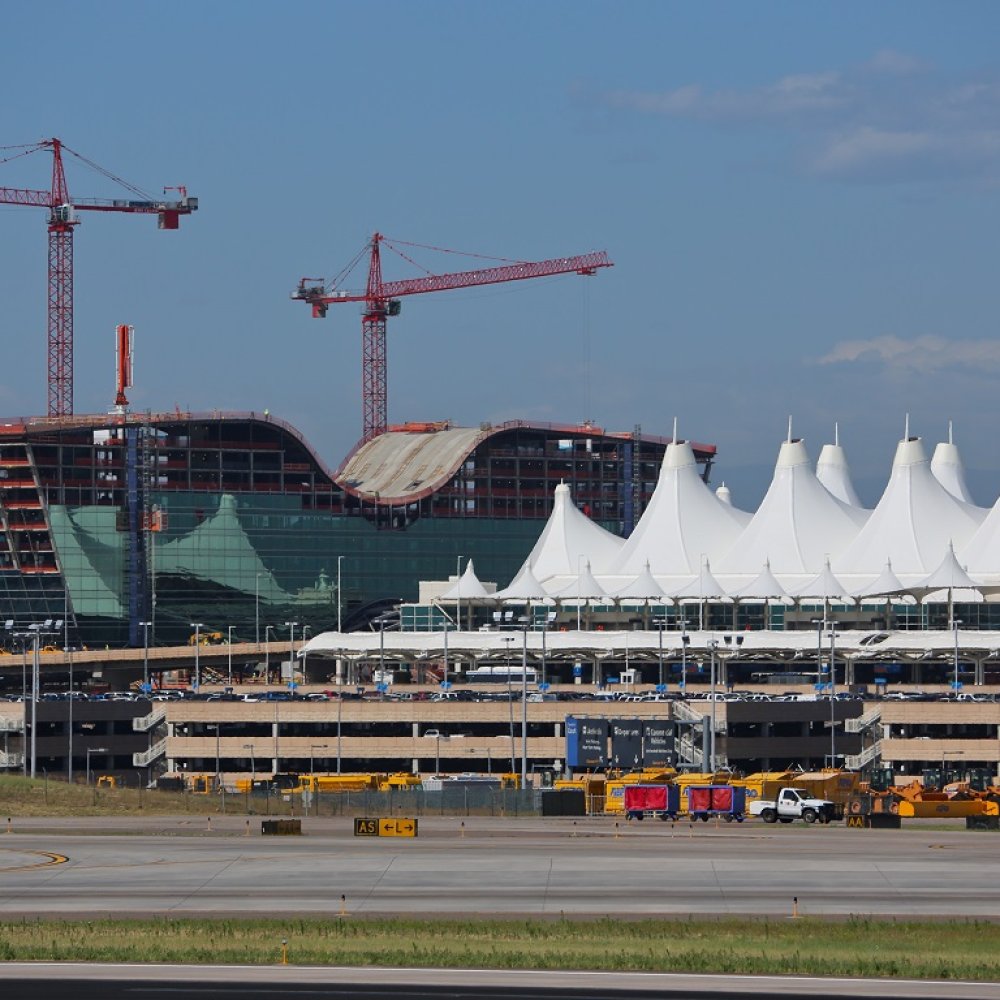Planning your journey to Cancún Airport, MX, is often one of the most overlooked parts of a trip - yet it sets the tone for your entire travel experience. Imagine the early morning heat as you bundle your luggage and step onto the vibrant streets of Cancún, the air filled with the distant hum of traffic and chatter from bustling vendors. You wonder: Do I catch a taxi, take a bus, or opt for a rideshare? Maybe you’ve heard whispers of a train option, but is it really convenient? When I last landed in Cancún, my taxi ride was smooth and efficient, but peers who took the bus battled crowds and delays. That’s why figuring out how to get to Cancún Airport, MX, requires more than just a quick decision - it deserves a deep dive into options, prices, timing, and quirks.

Why Plan Your Airport Transfer?
Getting to Cancún Airport, MX isn’t just about hopping into the nearest car or bus. Planning ahead means peace of mind, especially if your flight is super-early or arrives late at night. Cancún’s popularity with tourists means taxis can be in high demand, rideshare services like DiDi or Uber fluctuate with availability, and public transport schedules can be less predictable than you might expect. A carefully planned transfer helps avoid last-minute panics, hidden fees, or arriving late and missing your flight.
Moreover, Cancún Airport is about 16 kilometres from the city centre, so your transfer can take anywhere from 20 minutes to over an hour, depending on traffic, time of day, and transport mode. If you choose poorly, you might face long waits or pricey fares. I’ve seen travellers spend double on a taxi compared to a bus, but sometimes the added comfort and convenience is worth it. Ultimately, planning your trip to the airport gives you options, control, and saves money where it counts.
Price & Time Grid: Your Options at a Glance
| Transport Mode | Single Fare (MXN) | Return Fare (MXN) | Journey Time | First / Last Service | Night Surcharge |
|---|---|---|---|---|---|
| Taxi | 300–450 | Not applicable | 20–30 minutes | 24/7 | Yes (10–20%) |
| Rideshare (Uber/DiDi) | 250–380 | Not applicable | 20–30 minutes | 5:00–1:00 | Surge pricing during night |
| Cancún Airport, MX Train | - (Not available) | - | - | - | - |
| Express Bus (ADO) | 98 | 170 | 35–45 minutes | 4:30–23:30 | No |
| Local Bus | 12–15 | Not applicable | 45–60 minutes | 5:00–23:00 | No |
As the grid shows, while a taxi to Cancún Airport, MX, is often the fastest and most direct option, it is also the priciest. Rideshares can be slightly cheaper but expect surge pricing during busy hours. Interestingly, despite recent development plans, there is no operational train service connecting Cancún city centre to the airport, so don’t plan around the Cancún Airport, MX train. Express buses operated by ADO offer a budget-friendly, reliable alternative with set schedules and reasonable journey times. The local bus is cheapest but requires patience and a readiness to navigate more stops. Choose your mode based on timing, budget, and your tolerance for comfort versus cost.
Step-by-Step Guide for Each Mode
Taxi
- Locate authorised taxi stands at your hotel or in the city centre; avoid unmarked taxis.
- Confirm the fare before you hop in, or ask the driver to use the meter.
- Have your destination address ready: Cancún International Airport, Terminal 2 or 3.
- Secure your belongings as the driver takes toll roads to speed your trip.
- Carry local currency as some taxis don’t accept cards.
Rideshare
- Book a ride via Uber or DiDi app; enter Cancún Airport, MX as your destination.
- Meet your driver at the designated pick-up zones, usually hotel entrances or popular landmarks.
- Confirm the vehicle and licence plate before entering for safety.
- Enjoy an often more personalised, air-conditioned ride.
- Pay automatically via the app; tip if you’re happy with the service.
Rail
- Currently, there is no train service connecting Cancún proper to the airport; check updates locally.
- Consider alternatives such as bus or taxi.
Bus (Express ADO)
- Head to the ADO bus station in central Cancún or main hotels offering shuttle pickup.
- Purchase a ticket to Cancún Airport, MX; tickets are available online or at counters.
- Board the bus, store luggage in the dedicated compartment.
- Disembark at your desired terminal at the airport.
- Plan your departure time according to the bus schedule; missing one can mean long waits.
Returning a Rental Car
- Refuel your vehicle fully at the nearest petrol station to avoid extra charges.
- Follow airport signage carefully to the rental car return area.
- Inspect the car with the rental agent to confirm the return condition.
- Complete all paperwork; keep your return receipt as proof.
- If returning outside office hours, use the after-hours drop-box and note the process.
- Use the shuttle service from the rental car area to the Departures terminal.
- Allow extra time for this transfer to avoid flight stress.
Money-Saving Hacks
- Book buses and rideshares in advance whenever possible to lock in lower fares.
- Use cash for local buses as card facilities are often unavailable, saving you transaction fees.
- Share a rideshare with fellow travellers if possible to split the fare.
- Check for combo tickets or tourist passes offering airport shuttle discounts.
- Avoid using taxis during peak hours or late at night to dodge surcharge hikes.
Peak-Hour vs Off-Peak Travel Times
Peak hours in Cancún typically range from 7:30 to 9:30 in the morning and 5:00 to 7:30 in the evening on weekdays. During these times, traffic congestion on the main highway to the airport can add 15 to 30 minutes to your journey by taxi or rideshare. Plan to leave earlier if catching early morning flights or arriving during rush hour to reduce stress.
Off-peak travel times, notably mid-morning to early afternoon and late evening, offer smoother journeys with less traffic. Buses and shared shuttles generally maintain their schedules better during these periods. Scheduling your airport transfer around off-peak hours can save both time and money while improving comfort.

Accessibility & Luggage Factors
Cancún Airport is generally accessible, with ramps and assistance available for those with reduced mobility. When planning your transfer, keep in mind that taxis and rideshares offer door-to-door service, ideal if you have heavy or bulky luggage. Express buses have dedicated luggage compartments, but the step-up onto the bus might be challenging for some.
Local buses, while economical, often require navigating crowded vehicles and stairs, which may not be ideal for large suitcases. If you need special assistance, arrange it beforehand with bus operators or opt for taxis or rideshares to ensure comfort and ease. Cancún’s tropical climate can also affect how much you want to carry outdoors, so packing light or using services that minimise walking is advisable.
Carbon-Smart Alternatives
While Cancún is famed for its beaches, environmentally conscious travellers can consider shared shuttle options that reduce emissions by maximising occupancy. Some hotels and tour operators offer collective airport transfer shuttles, combining convenience with lower carbon footprints. Although there is no Cancún Airport, MX train connection yet, exploring bike-and-ride options for last-mile segments around town is possible.
Park-and-ride facilities around Cancún exist but are limited in scope; these allow you to leave your car securely and jump on a shared shuttle to the airport. Such options are ideal for frequent travellers or long-term stays wanting to cut down on rental days and emissions. Opting for greener transport not only helps the environment but often saves money.
Sample 08:00 Flight Timeline
- T-12 h: Confirm your transfer booking or plan your route to Cancún Airport, MX.
- T-4 h: Pack your carry-on essentials and check flight status.
- T-2 h: Depart from your accommodation using your chosen transport mode.
- T-0: Arrive at Cancún Airport, MX with ample time to clear security and relax before boarding.
Hidden Pitfalls & Local Quirks
Despite its status as a global tourist hub, Cancún has a few transport quirks that travellers should know about. First, be aware of strike days affecting taxi and bus services; these are often announced locally but can cause sudden disruption. Second, many local buses operate cash-only, so keep small bills on hand - no change or cards accepted. Third, the motorway to the airport includes tolls; taxi and rideshare drivers typically cover these in the fare, but it’s worth confirming to avoid surprises.
- Strike days may force last-minute alternate transport plans.
- Cash-only buses require exact change and patience.
- Motorway tolls can sometimes add 50–70 MXN to taxi fares.
Eight Mistakes Travellers Make
- Booking a taxi without agreeing on the fare first, leading to inflated bills.
- Assuming there’s a train link to the airport - currently there isn’t one.
- Not accounting for rush-hour traffic and arriving late for flights.
- Choosing the cheapest local bus without considering the challenge of handling luggage.
- Failing to check rideshare app availability late at night or in early mornings.
- Not refuelling and inspecting rental cars before returning them.
- Ignoring night surcharges on taxis or rideshares after 9 pm.
- Forgetting to have small bills ready for cash-only bus rides.
Frequently Asked Questions
Is there a direct train to Cancún Airport, MX?
Currently, no train service runs directly to Cancún Airport. Travellers must rely on taxis, rideshares, or bus services to reach the airport from the city centre.
How much does a taxi to Cancún Airport, MX usually cost?
Taxi fares generally range from 300 to 450 MXN depending on your pickup location, time of day, and traffic conditions. Night surcharges may apply.
Are buses reliable for getting to the airport?
Express buses like those by ADO are reliable and follow schedules with standard journey times of 35-45 minutes. Local buses are cheaper but less predictable and may not be ideal if you have heavy luggage.
What should I consider when returning a rental car at Cancún Airport, MX?
Refuel fully before return, follow airport signage, inspect the car with a rental agent, complete paperwork, and use the shuttle to the terminal. Allow extra time to complete this process stress-free.
Call to Action
Now that you know exactly how to get to Cancún Airport, MX, it’s time to put your plans into action with confidence. Have you tried any of these transfer options or discovered hidden gems for airport travel in Cancún? Share your experiences in the comments below, and don’t forget to subscribe for more savvy travel guides tailored to helping you navigate airports worldwide.





